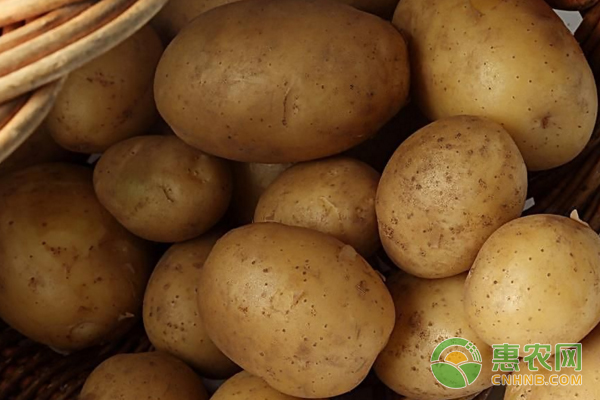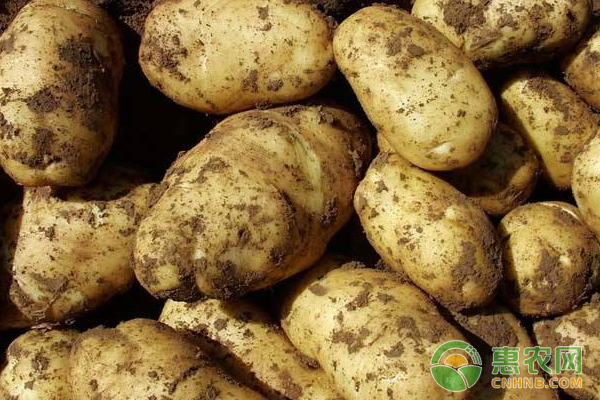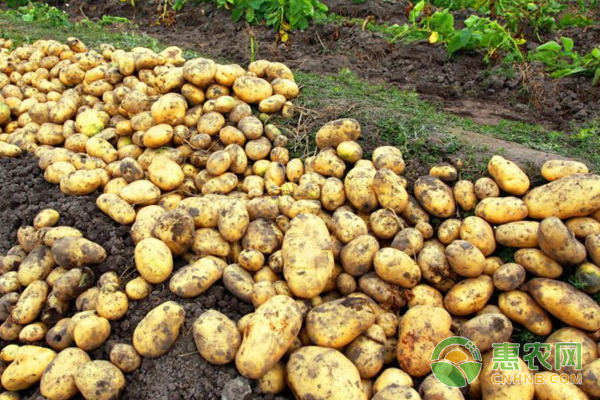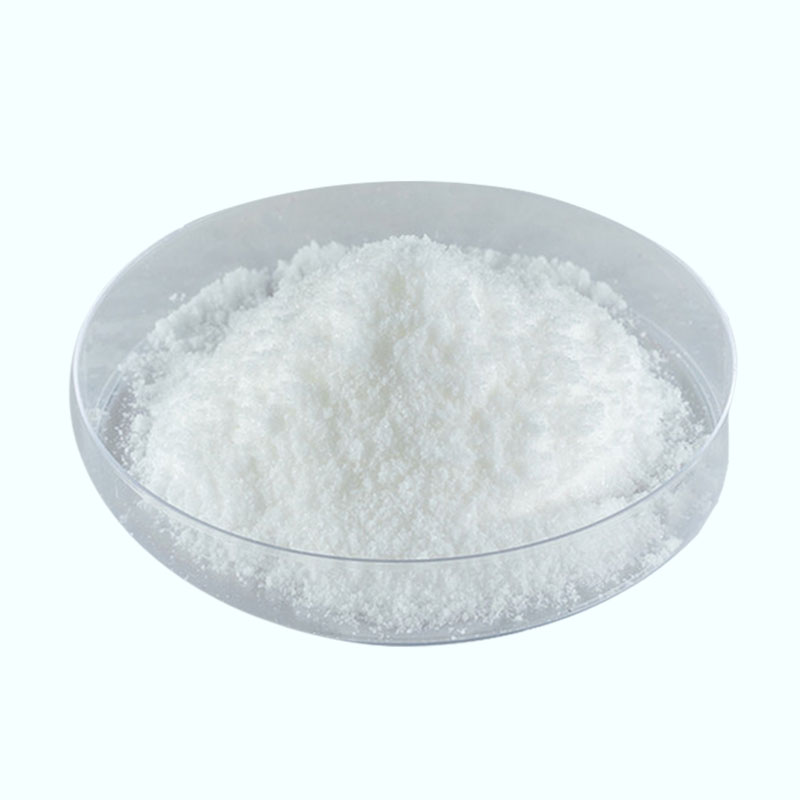How is the potato planted with high yield? Potato seeding method and pest control
How is the potato planted with high yield? Potato is one of the four important food crops in China, so it has high planting value and edible value. When planting potatoes, field management is very important, which directly affects potato yield and quality. Now Xiaobian says that potato is high-yield. Relevant knowledge points of planting.

First, the method of planting potatoes
1. Selected seed potatoes
a. Choose healthy seed potatoes that are healthy and disease-free, with smooth surface and color, and weight of 1-2;
b. For epidermis cracking, bud eye necrosis, and tuber with disease spots, it needs to be eliminated in time.
2. Seed potato cutting
a. Seed potato cutting is beneficial to promote oxygen exchange inside and outside the tuber, and accelerate the germination and emergence of potato tubers;
b. When the potato is cut into pieces, it is easy to pass the knife to pass the disease, so that the potato has rotten seeds, lack of seedlings and high incidence rate;
c, potato cut weight is most suitable in 20-30g;
d. Select the slitting when the potato is cut, so that each block can have the bud eye with the top advantage.
3. Seed potato germination
a, seed germination before germination, can effectively promote potato early maturity, increase yield, is conducive to timely elimination of rotten potatoes in the process of germination, reduce the rate of diseased plants after planting or lack of seedlings, is conducive to the growth of potato seedlings;
b. The specific operation of seed potato germination is: layering the seed potato and sand layer, the thickness is 3-4 layers, and at the same time ensuring that the temperature is within 20 degrees and in a long-term humid environment, the seed potato will germinate after 10 days.

4. Seeding at the right time
a, the most suitable temperature for the potato potato season is in the range of 15-25 degrees;
b. The best sowing time for autumn potatoes is from late September to late October;
c. The best sowing time for winter potatoes is from late December to mid-January.
5. Reasonable close planting
Potatoes per acre are planted within 6000 plants, and 2-3 stems per plant are most suitable.
Second, the field management of potatoes
1. Check seedlings
a. After the emergence of the potato, check the seedlings and make up the seedlings in time to ensure the growth of the whole seedlings;
b. When the seedlings are replenished, it is found that there are sick and rotted potatoes in the pits. First, the surrounding soil should be dug up and then the seedlings should be replenished. This is also to prevent the new seedlings from being infected;
c. When the soil is in a dry state, it can be planted with a small amount of fertilizer by digging a hole and watering, which can effectively reduce the slow seedling time and make it grow fast.

2. Cultivating soil
a. The cultivating loose soil is conducive to the looseness and permeability of the soil, and promotes root growth, stolon elongation and tuber enlargement;
b. Before the emergence of the potato seedlings, if the soil surface is knotted, loose soil is needed, which is beneficial to emergence;
c. After the seedlings, the first cultivating is required, the depth is 8-10cm, and the weeding is carried out at the same time;
d. The second cultivating is carried out for 10-15 days after the first cultivating, and the depth is slightly shallow;
e. When the potato is budd, the third cultivator is carried out, and the depth is shallow.
3. Timely topdressing
a. After the potato emerges, use the faecal water and a small amount of nitrogen fertilizer to apply the germination fertilizer to promote the rapid growth of the seedlings;
b. In the bud stage of the potato, the potato fertilizer is applied in combination with the soil, and the fertilizer is mainly based on potassium fertilizer, and the nitrogen fertilizer is applied. The amount of fertilizer should be determined according to the growth of the plant;
c. There is no need to apply fertilizer after flowering, but if the potato has premature aging in the later stage, phosphorus or potassium or trace elements can be applied to the foliage.
4. Pest control
a, common diseases are: viral diseases, late blight, bacterial wilt, ring rot, scab, cancer, etc.;
b. Common pests include: ladybugs, soilworms, mites, crickets, crickets, etc.;
c. Late blight needs to be controlled early with Bordeaux or Streptomyces;
d. Bacterial wilt can be controlled by rational rotation, selection of resistant varieties and use of small whole potatoes for seed treatment;
e, pests can be controlled by means of drugs or artificial killing.
5. Timely harvest
a. When the plant stops growing, the stems and leaves are wide-yellow, the tubers are easy to separate from the stolons, and the pericarp is hardened, then the best potato harvest period;
b. The use of tubers requires 5-7 days in advance to harvest, which is beneficial to alleviate the adverse effects of high temperature during the late growth period and improve seed quality.
Application & Function:
L-Carnitine is essential in the utilization of fatty acids and in transporting metabolic energy.
1) L-carnitine Powder can Promote normal growth and development;
2) L-carnitine Powder can Treat and possibly prevent cardiovascular disease;
3) L-carnitine Powder can Treat muscle disease;
4) L-carnitine Powder can Help build muscle;
5) L-carnitine Powder can Protect against liver disease;
6) L-carnitine Powder can Protect against diabetes;
7) L-carnitine Powder can Protect against kidney disease;
8) L-carnitine Powder can Aid in dietingDescri
1) L-carnitine Powder can Promote normal growth and development;
2) L-carnitine Powder can Treat and possibly prevent cardiovascular disease;
3) L-carnitine Powder can Treat muscle disease;
4) L-carnitine Powder can Help build muscle;
5) L-carnitine Powder can Protect against liver disease;
6) L-carnitine Powder can Protect against diabetes;
7) L-carnitine Powder can Protect against kidney disease;
8) L-carnitine Powder can Aid in dietingDescri
Our company offers variety of products which can meet your multifarious demands.including API Powder.Pharmaceutical Intermediates.Vitamins Powder.Plant Extracts.Food Additive.Peptide Powder and so on We adhere to the management principles of "quality first, customer first and credit-based" since the establishment of the company and always do our best to satisfy potential needs of our customers. Our company is sincerely willing to cooperate with enterprises from all over the world in order to realize a win-win situation since the trend of economic globalization has developed with anirresistible force.
|
CAS541-15-1 Hot Sale High Quality L-Carnitine Powder
|
|
|
Product name:
|
L-Carnitine
|
|
Appearance:
|
White crystalline powder
|
|
Purity:
|
99%min
|
|
CAS:
|
541-15-1
|
|
Molecular Formula:
|
C7H15NO3
|
|
Molecular Weight:
|
161.20
|
|
EINECS:
|
208-768-0
|
The body produces carnitine in the liver and kidneys and stores it in the skeletal muscles, heart, brain, and other tissues. But its production may not meet the needs under certain conditions such as increased energy demands and therefore it is considered a onditionally essential nutriention. There are two forms (isomers) of carnitine, viz. L-carnitine and D-carnitine, and only the L-isomer is biologically active.
product Photo:

L-Carnitine,Anti-Aging Bovine Collagen Powder,Skin Whitening L-Glutathione Powder,Nasal Spray Bottles
Shaanxi YXchuang Biotechnology Co., Ltd , https://www.peptide-nootropic.com